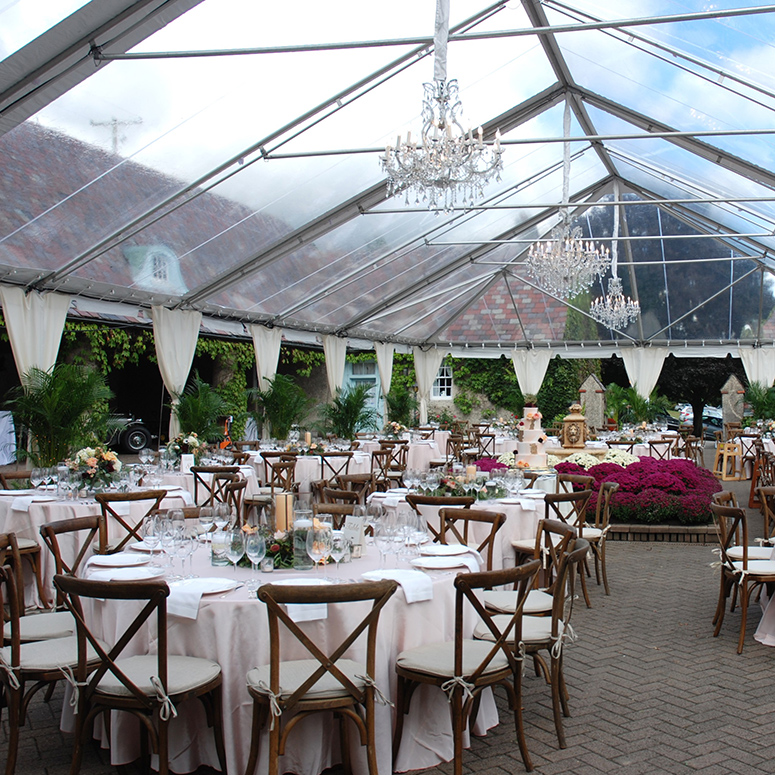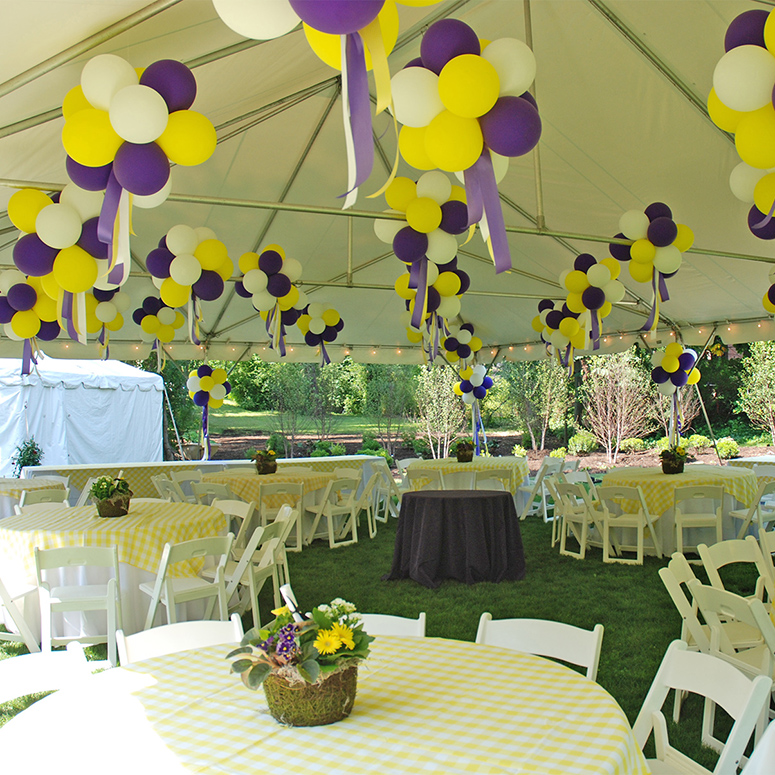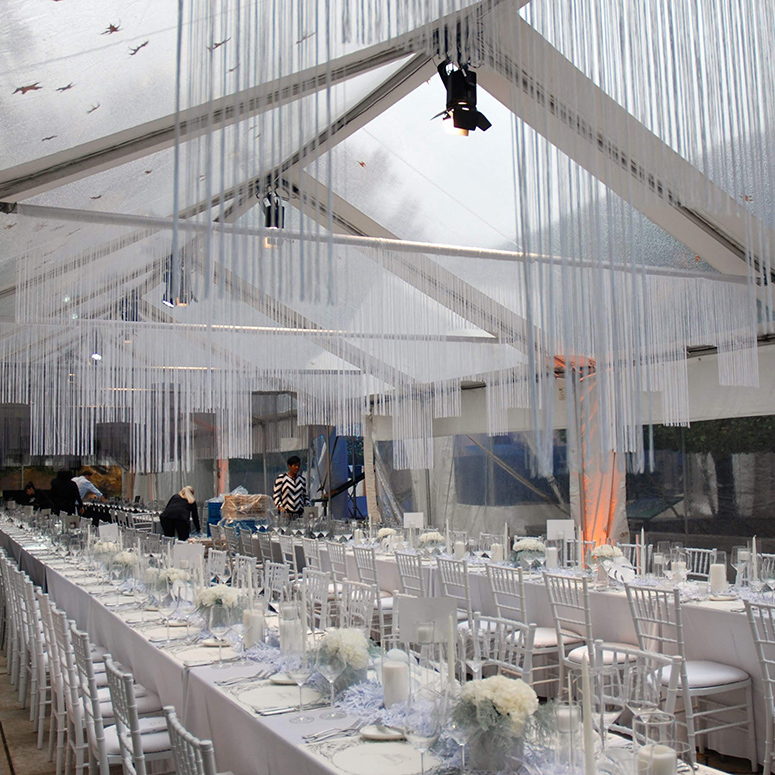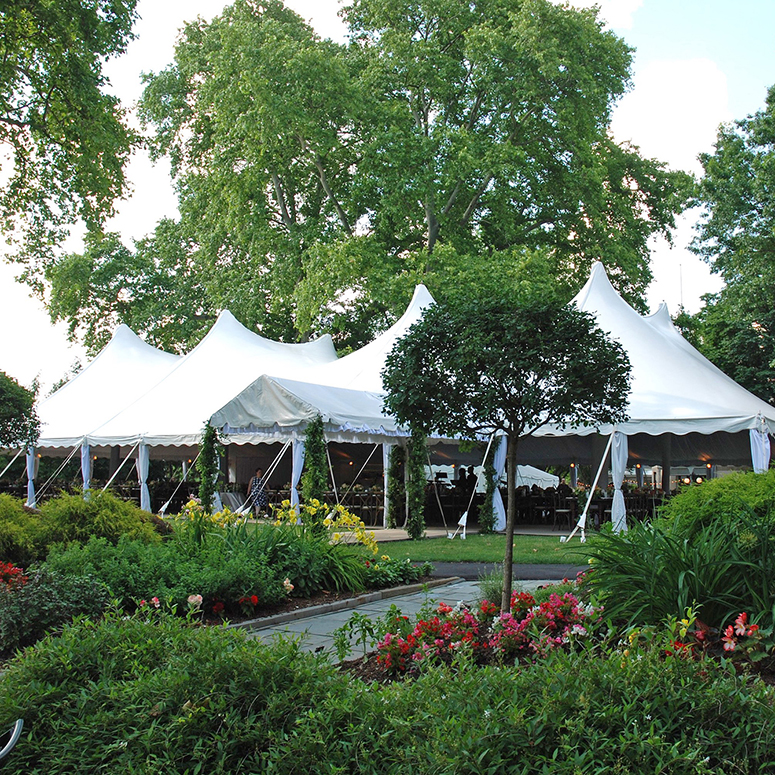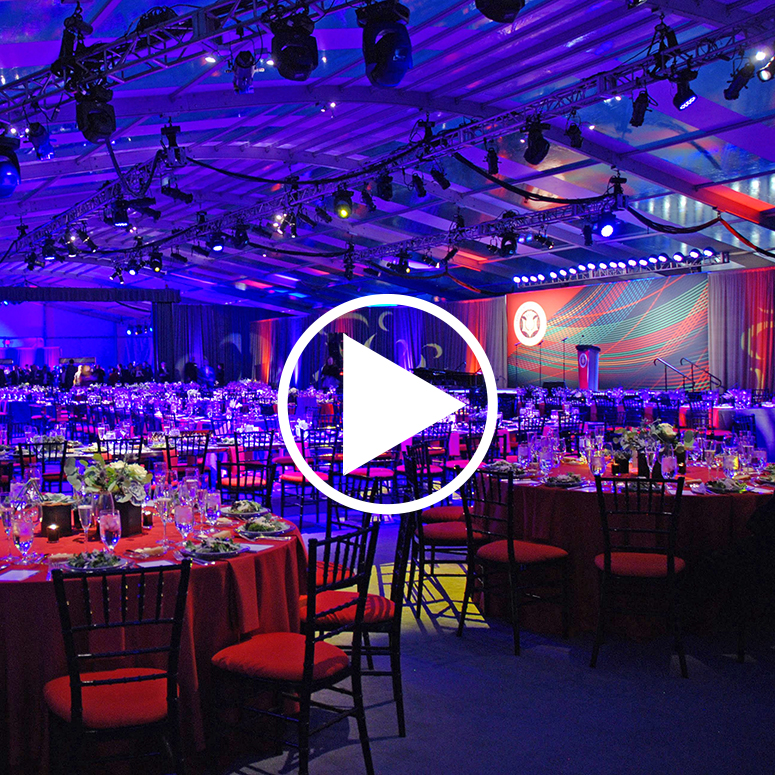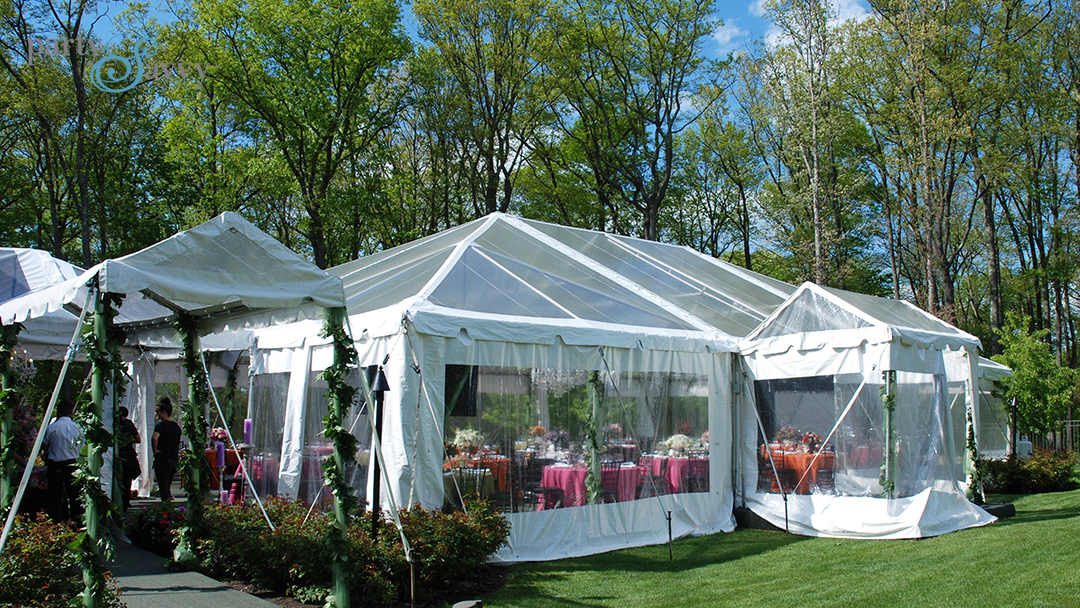 Except for our lightweight party canopies which customers can pickup and install themselves, all of our tents need to be delivered and installed by our crews. Before we accept an order for tenting, we need to see the site to determine if it is suitable for the size and type of tent(s) needed for the event that is being planned. We need to have an understanding of the conditions at the site with respect to how the tent can be anchored, access to the site by truck, etc., in order to properly prepare for the installation.
Except for our lightweight party canopies which customers can pickup and install themselves, all of our tents need to be delivered and installed by our crews. Before we accept an order for tenting, we need to see the site to determine if it is suitable for the size and type of tent(s) needed for the event that is being planned. We need to have an understanding of the conditions at the site with respect to how the tent can be anchored, access to the site by truck, etc., in order to properly prepare for the installation.
Prior to our meeting at the proposed event site, we will work with you by phone and / or email to gather as much information as we can about your event. We’ll need to know what type of an event you are planning, the date and time of the event, the number of guests you are expecting, and so on. Having this information in advance will help us determine approximately what size tent(s) you will need for your event, and will save both of us considerable time on site.
When we arrive for the site evaluation, we’ll review our notes with you to make sure we have a good understanding of your plans, and then we’ll want to look at the proposed tent site. Quite often, there is only one possible location for the tent; in other situations, there may be several options, in which case, we will consider the pros and cons of each possible site. Once we have settled on the location of the tent, we will measure the area to make sure the tent will fit in the available space; some sites have more than enough space, and may be large enough to provide several options regarding the placement of the tent.
Some of the things we need to take into consideration include weather concerns, terrain, underground utilities, and more. Below is a partial listing of the things we’ll evaluate at the site:
- Will the site accommodate the tenting needed for the event you are planning?
- Is the area level enough to be used for guest seating at tables and chairs?
- Is all of the space under the tent usable for guest seating, or are there areas under the tent that are not suitable for seating, but may be usable for something else, such as a bar area?
- Are there places under the tent that may collect water if it is raining after the tent goes up?
- Which direction does the wind and rain typically come from?
- Where will the sun be in the sky during the event, and will it be a factor? If your event is taking place on a sunny afternoon, you are not going to want to be under a tent with a clear top. Will the setting sun be in your guests eyes as they are sitting down to dinner? If so, you may need a solid white sidewall to block the sun on that side of the tent.
- Can we drive tent stakes into the ground on all four sides to anchor the tent? If not, we’ll need to determine how to anchor the tent with concrete tent weights where necessary.
- Is there anything underground that we might damage if we hit it with a tent stake; we need to be made aware of any underground utilities, both public and private. Public utilities typically include electric utility lines, natural gas lines, telephone lines, cable TV lines, public water lines, and so on.
- If there are privately installed utility lines underground, such as lawn sprinkling systems, gas lines, electric lines, drainage lines, etc., it is the customer’s responsibility to mark the location of those lines prior to the arrival of our installation crew. If these lines are not properly marked, and we hit one or more with a tent stake, we will not be responsible for the repair of the damaged lines.
- If we have reason to believe there may be public utilities in the area where the tent(s) will be installed, we will place an order with the PA One Call service to have all of the public utility companies that service that address come out to locate any underground lines they may have in the area in which we will be driving tent stakes.
- Note: It is important that all underground utility lines in the areas where tents are to be installed are properly marked to prevent damage to those utility lines, and for the safety of our crew.
- Is there anything overhead that might interfere with the tent installation? Overhead utility lines, and low hanging tree branches are the most common overhead obstacles. Sometimes, the tree branches are flexible enough that the tent will push them up without causing any problems. However, if the branches are too heavy and not flexible, the only option may be to have them removed prior to the tent installation, or look for an alternative tent site.
- If electricity is needed at the tent site to power tent lighting, catering equipment, a band or a DJ, etc., is there adequate power close to the tent site, and if not, where will the power come from? In some cases, an electrician can bring temporary power to the site from a nearby building. In other situations, towable generators will likely be needed.
- What is the access to the site with our trucks? Can we get our trucks reasonably close to the site, and if not, what is the distance from the truck to the tent site, and how difficult and time consuming will it be to move the equipment from our trucks to the site and back? In some cases, poor access to the site may result in additional labor charges for the extra time needed to do the job. On occasion, we may reject the job entirely, due to unreasonably poor access to the site.
 These are some of the most common factors we need to consider when evaluating a site for tenting. While we are on site, we often mark the location of the tent to get a feel for the space. We use tape measures to “square” the tent on the site; once we have the perimeter of the tent laid out with our tape measures, we’ll take a series of photos showing exactly where the tent will be situated on the site. We often take measurements from buildings, houses, trees, etc. that are close to the tent site to indicate the exact location of the tent corners from those objects. In many cases, we’ll also make a sketch of the site.
These are some of the most common factors we need to consider when evaluating a site for tenting. While we are on site, we often mark the location of the tent to get a feel for the space. We use tape measures to “square” the tent on the site; once we have the perimeter of the tent laid out with our tape measures, we’ll take a series of photos showing exactly where the tent will be situated on the site. We often take measurements from buildings, houses, trees, etc. that are close to the tent site to indicate the exact location of the tent corners from those objects. In many cases, we’ll also make a sketch of the site.
Following our site visit, we will create an itemized quote for all of the equipment and services needed to produce the event, as discussed. We typically produce a CAD drawing to provide a floorplan showing how all of the furniture will be placed under the tent(s). This helps everyone visualize the set up, and provides a plan for our crews to follow when they arrive to set up the event.
Conducting a thorough site evaluation, and following up with an itemized quote and a CAD drawing is a time consuming process. Our fee for this service varies based on the location of the event and the complexity of the plan. Our minimum fee is $200 for a basic plan in our local delivery area; our fees increase for more complex events, and for locations that are out of our local delivery area.
Site evaluation fees are payable in advance, and are non-refundable; however, if you place an order with us, and confirm your order with a 50% deposit, we will apply your site evaluation fee to your rental order. If you decide to cancel your confirmed order, your site evaluation fee will not be refunded.

